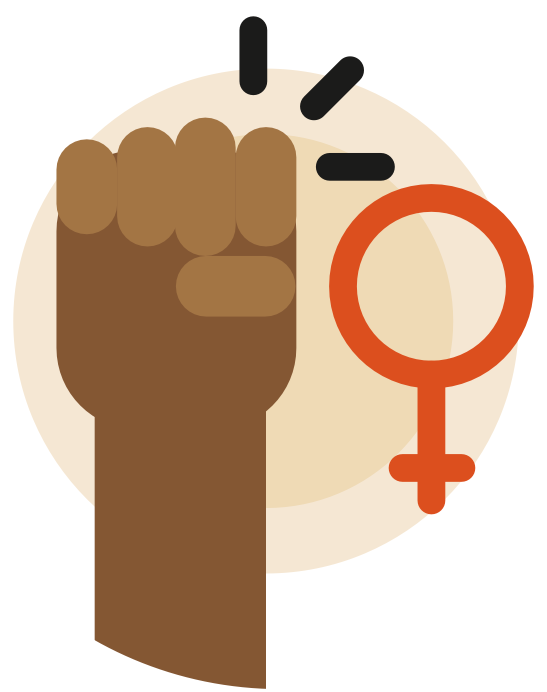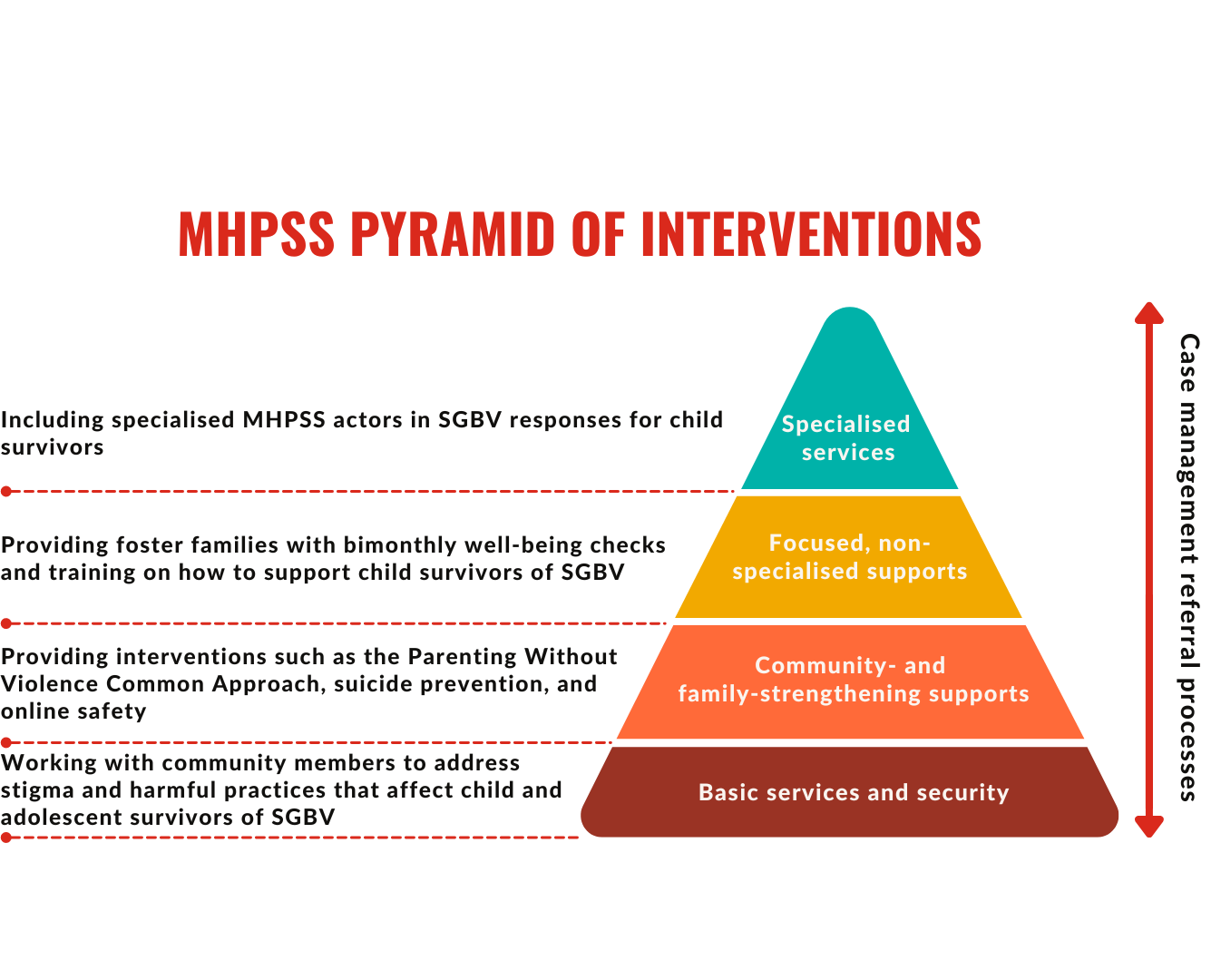Sexual and Gender-based Violence (SGBV)
MHPSS recommendations for cross-sectoral themes
Depending on the cultural context, SGBV survivors, their families and their immediate communities may face social exclusion, isolation, discrimination, loss of dignity, further violence or even threats to life.
Read the summary below or access the full guidance.

Depending on the cultural context, SGBV survivors, their families and their immediate communities may face social exclusion, isolation, discrimination, loss of dignity, further violence or even threats to life.[1] Non-offending caregivers typically experience a range of emotions when their child discloses sexual abuse. These include anger, disbelief, shock, worry, deep sadness and fear.
Service providers who respond to cases of child sexual abuse must have strategies and skills that support the physical and emotional healing and recovery of the child as well as the positive involvement of non-offending caregivers and/or family members.

[1] IFRC, Sexual and gender-based violence – A two-day psychosocial training. Training guide,2015
Key Resources:
- Women’s Refugee Commission & International Rescue Committee, Building Capacity for Disability Inclusion in Gender-Based Violence Programming in Humanitarian Settings. A Toolkit for GBV Practitioners, 2019
- Boys and men: UNHCR, Working with Men and Boy Survivors of Sexual and Gender-Based Violence in Forced Displacement , 2012
- Health : WHO , Caring for women subjected to violence: a WHO curriculum for training health-care providers, LIVES approach
